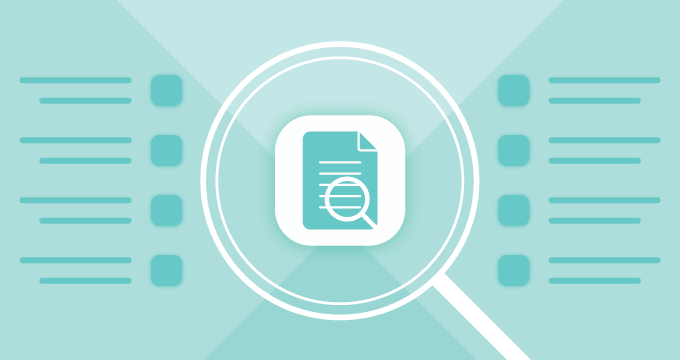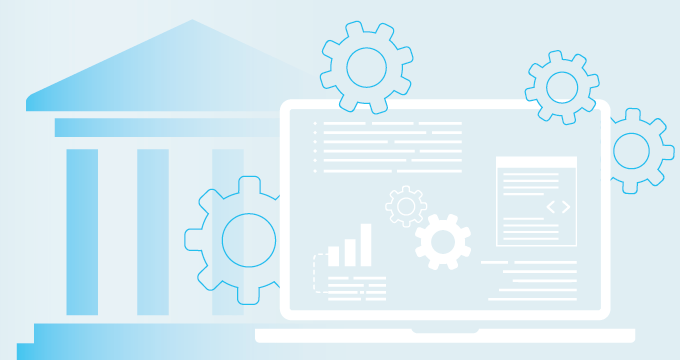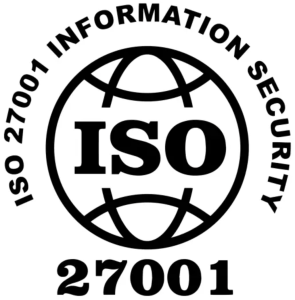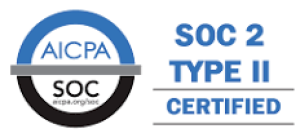No matter how careful you are, ransomware attacks, cybersecurity breaches, hardware failures, and natural disasters happen. Every organization is susceptible to unexpected disruptions, and in today’s always-on business environment, minimizing downtime during outages or disasters is critical.
According to relevant studies, the cost of downtime is in the vicinity of $9,000 per hour. However, this figure is even higher for certain industries, including banking, finance, government, healthcare, media, and communications, where the cost of downtime can be upward of $5 million.
To prevent these expensive incidents and ensure high-quality customer experience, companies need a robust disaster recovery (DR) plan to protect their operations. Central to any effective DR strategy are two crucial metrics: the RTO (Recovery Time Objective) and RPO (Recovery Point Objective).
Though the RTO and RPO might seem like technical jargon, understanding these terms is essential for IT professionals, compliance officers, and decision-makers involved in ensuring business continuity.
This article will explore:
- Differences between the RPO vs. RTO
- Importance of these two metrics in DR planning
- Methods for optimizing these metrics effectively
What Is RTO?
The RTO (Recovery Time Objective) refers to the maximum acceptable amount of time a system, application, or process can be offline after a failure before it significantly impacts business operations.
In simpler terms, the RTO is the target time you aim to have everything back up and running after a disruption.
For example, if you determine that your RTO for a critical application is two hours, it means that you must restore the system within two hours to avoid unacceptable financial loss, customer dissatisfaction, or compliance penalties.
What is RPO?
The RPO (Recovery Point Objective) defines the maximum acceptable amount of data loss measured in time. It represents how far back in time you need to recover data to resume normal operations. In essence, the RPO indicates how long it can take between the last backup and an outrage without causing an unacceptable data loss that could affect the continuity of your business operations. This metric is measured from the moment the outage happens to your most recent data backup.
For example, if a business defines an RPO of four hours, the company needs a backup plan that ensures no more than four hours’ worth of data will be lost in case of a disruption. This metric is particularly important when considering data-heavy industries like finance or healthcare, where losing even a few minutes of data can have significant legal or financial consequences.
So, it’s crucial to determine your RPO and if necessary adjust your backup frequency to protect your organization from excessive data loss.
RPO vs. RTO: Key Differences
While both the RPO and RTO focus on disaster recovery, they serve different purposes:
- RTO deals with the time it takes to recover and restore systems, applications, and operations.
- RPO addresses data loss and how much data a company can afford to lose during downtime.
To put it simply:
- RTO measures time to recovery.
- RPO measures data loss tolerance.
The two metrics often work together, but they represent distinct objectives in a disaster recovery plan.
Importance of Defining RPO and RTO Values in Disaster Recovery
Accurately defining the RPO vs. RTO can help your business develop an effective disaster recovery plan that meets your unique needs. Here’s why it’s crucial to define these metrics and analyze them consistently:
- Minimizing downtime and data loss. Setting clear RTO and RPO limits helps your business minimize both operational downtime and data loss, as well as ensure quicker recovery from disruptions.
- Cost efficiency. DR solutions that offer lower RTOs and RPOs can be more expensive, but companies must balance recovery speed and cost. Understanding the trade-offs allows for better budgeting and resource allocation.
- Regulatory compliance. Many industries, such as healthcare, finance, and government, have strict regulations that require specific RTO and RPO limits to protect sensitive data and ensure continuity of services.
- Customer satisfaction. Extended downtime or data loss can lead to frustrated customers and damaged reputations. By defining the RTO and RPO values, you can ensure continuity and customer satisfaction during incidents.
How to Define Your RTO and RPO Values
Defining the RTO and RPO values requires understanding your business operations and identifying the criticality of your data and systems.
Here’s a step-by-step guide to help you with this task:
1. Assess business impact
Begin by conducting a Business Impact Analysis (BIA) to understand the potential impact of a disaster or outage on your organization. Identify which systems, applications, and data are most crucial to your operations.
Key questions:
- What are the most critical systems that must remain operational?
- How much data can be lost without affecting business performance or compliance?
- What financial or reputational losses could occur due to downtime?
- What are the data retention requirements for compliance, and how do they affect your recovery objectives?
2. Categorize systems by priority
Not all systems have the same importance. For instance, while an e-commerce platform’s payment processing system might have a short RTO, a less critical internal HR portal might have a longer RTO.
- High-priority systems. Critical systems may have an RTO of minutes to an hour and an RPO close to zero, as data loss in these systems would result in significant financial loss or compliance issues.
- Low-priority systems. Non-essential systems can have longer RTOs and RPOs because their failure doesn’t immediately affect core business functions.
3. Determine tolerable downtime and data loss
Based on your BIA, determine how much downtime (RTO) and data loss (RPO) are acceptable for each system. Businesses often have different RTO and RPO requirements for each department or application, considering data retention policies to ensure that essential data is available and recoverable within regulatory guidelines.
Examples:
- An RPO of one hour may be acceptable for back-office applications, while mission-critical systems might require near-zero RPO to ensure no data loss.
- RTO for customer-facing services might need to be within minutes, while internal reporting systems could have an RTO of a few hours.
4. Evaluate current infrastructure and DR capabilities
Your current infrastructure and backup technologies will influence the recovery point objective and recovery time objective. Review the DR systems and cloud services you have in place to ensure they can meet the desired RPO and RTO targets.
Key considerations:
- Can your current systems restore data within the required RPO timeframe?
- Do your backup systems allow you to meet your RTO goals?
- Is additional investment in technology needed to achieve your RPO and RTO targets?
5. Test and adjust
Once you’ve defined your RTO and RPO, it’s essential to test your DR plan regularly. Simulating outages and measuring recovery times help ensure that the systems and processes in place meet your defined objectives.
Testing different scenarios is a surefire way to prepare for any potential incident. Consider both minor disruptions (e.g., hardware failures) and major disasters (e.g., natural disasters, cyberattacks) to assess the resilience of your disaster recovery strategy.
RTO and RPO Best Practices
To implement an effective disaster recovery plan, consider the following best practices for defining and maintaining the right RTO and RPO:
Perform regular backups
To ensure extremely low RPOs, it’s recommended to set frequent, automated backups or use continuous data replication to capture real-time changes and minimize data loss during an outage. Automated, cloud-based solutions often provide the most reliable way to achieve shorter RPOs.
Protect critical data through redundancy
Invest in redundant systems, especially for critical infrastructure, to shorten RTOs and reduce downtime. Redundancy isn’t the same as backing up your data.
This practice involves having duplicate systems, hardware, or networks that can take over instantly in case of failure. While backups help restore data, redundancy ensures that operations can continue without interruption by switching to a secondary system.
Implement synchronous mirroring
Synchronous mirroring is an advanced data replication method that ensures real-time synchronization between your primary and backup systems.
Writing data to both locations simultaneously eliminates the risk of data loss, offers a near-zero RPO, and significantly reduces the RTO. In the event of a failure, the mirrored system can immediately take over with no data gaps, making it ideal for organizations that require continuous availability, such as financial institutions and healthcare providers.
Cloud-based disaster recovery solutions offer greater flexibility, scalability, and cost-effectiveness, allowing businesses to reduce the RTO and RPO without significant capital investment.
How Can Data Archiving Help You Optimize Your RPO and RTO?
Data archiving is a crucial step in optimizing both RPO and RTO by offloading inactive or less-critical data to long-term storage.
By archiving older, less frequently accessed data, you can streamline backup and recovery processes, allowing faster recovery times for active systems.
Cloud-based archiving solutions like Jatheon provide an efficient way to securely store large volumes of data while ensuring compliance with industry regulations.
Archiving reduces the burden on primary storage systems, which in turn, speeds up recovery and helps meet more stringent RPO targets by focusing resources on critical, up-to-date data.
Summary of the Main Points
- RTO (Recovery Time Objective) measures the maximum acceptable downtime for systems or applications before it impacts operations, while RPO (Recovery Point Objective) defines the maximum data loss tolerance, focusing on how much data can be lost in an outage.
- RTO addresses recovery time, and RPO deals with data loss. Both are essential for minimizing disruption and ensuring continuity in a disaster recovery plan.
- Defining these metrics helps minimize downtime and data loss, balance cost with recovery speed, meet compliance requirements, and maintain customer satisfaction.
- Key strategies include regular backups, redundant systems, synchronous mirroring for real-time replication, and cloud-based disaster recovery solutions.
- Offloading inactive data to long-term storage via cloud-based archiving solutions optimizes recovery processes by focusing resources on critical, up-to-date data, helping to meet RPO and RTO goals effectively.
To learn how Jatheon’s cloud archiving software can help your business optimize the RTO and RPO, contact us or book a demo.
FAQ
What’s the difference between RPO and RTO?
The RPO focuses on minimizing data loss by defining how much data can be lost, while the RTO aims to minimize system downtime by defining how long it takes to recover from a failure.
Why are RPO and RTO important?
The RPO and RTO help businesses plan for disruptions by defining acceptable levels of downtime and data loss. They are critical for business continuity, regulatory compliance, and minimizing financial loss.
What’s an example of a good RTO and RPO?
For a financial services firm, an RTO of 30 minutes and an RPO of 5 minutes might be required to avoid customer dissatisfaction and regulatory penalties.
Can a business have different RTOs and RPOs for different systems?
Yes, businesses often assign different RTO and RPO values based on the priority and criticality of their systems. Critical systems have shorter RTOs and RPOs, while non-essential systems can have longer targets.
How can cloud solutions help with RTO and RPO?
Cloud solutions offer scalable, flexible, and cost-effective disaster recovery options. They can reduce both RTO and RPO by providing faster recovery times and frequent automated backups.
Read Next:Data Inventory and Data Mapping: A Comprehensive Guide Archive vs. Delete Emails: What’s the Difference and Which Is Better? |











